-
Posts
898 -
Joined
-
Last visited
Content Type
Profiles
Forums
Gallery
Events
Posts posted by aydingocer
-
-
-
Build day 31 - Sanding and more deck components
I continue with fine sanding and then the plan is to assemble more mahogany deck components. The reason why I did not include them to the sanding process is that I thought it would be better to sand them individually and glue afterwards since they form bumps and bulge over the flat surface, otherwise would make sanding process more painful.
For 240 grade sanding of the deck I use this sanding sealer:
Sanding sealer brushed and waiting to dry:
After waiting for about 30-40 mins (as instructed) I sanded the deck using 240 grade.
-
I found Git Rot at a hard ware shop It is used for repairing rotten wood on windows etc
I will try and find some where I am as I am not home in RI at the moment If I find some soon I can send it to you. as regular postage from the states is not to bad
Andy
Thank you in advance. That'd be great. I will look into local shops and see if there is it or any equivalent, before bothering you.
-
Build day 30 - Sanding.
2 hours today.
102 hours into build in total.Today I continued with final fillings as well as first sanding of the deck.I think the filling job of the body is complete now and it is ready to proceed to finer sanding (150 grit).I also made a test of glass fibre + epoxy on a piece of scrap plank. Looks OK so far but I will know better after I have done 2-3 layers. -
Hi
A great build I have been following from the bridge on the power boat I now drive. I use to drive a Riva Super Aquarama When I was the Mate on a 115 foot motor boat called Henry Morgan after the pirate. We TOWED it around the Mediterranean, Spain Italy France It was called "Bananas" if the weather was bad we just did not go any where saved use from hours of bad weather.
Anyhow When I built a model that was going in water I used a product called "GIT ROT" a very thin liquid that socked right through the wood layers and sealed them all together forming a solid hard water proof smooth finish, that was easily painted below the water line and could be varnish above the water line Added very little weight and there is no risk of horrible fiberglass ruining your hard work
Best
Andy
Hi Andy,
So you have the front seat experience of an Aquarama! Cool!

I have checked the online stores for this GIT ROT but it is available only in US shops which either do not ship to Finland or at ridiculous shipping rates. I will ask the marine shops around if they have that or soething equivalent.
/A.
-
Build day 29 - Sanding.
2 hours today.
100 hours into build in total.Today I celebrate 100th hour! Cheers!Thank you Keith, for the kind and encouraging words.Today I spent around 2 hours for consecutive filling of the gaps. Nothing much to show. Just for the record.. and of course for the honour of 100th hour .
. - EJ_L, Robin Lous, WackoWolf and 1 other
-
 4
4
-
Build day 28 - Sanding.
3 hours today.
98 hours into build in total.Sanding finally started today. I spent altogether 3 hours:- Rasping and shaping the rear arc moulds,- first coarse sanding of the hull (not the deck, yet) using 80 grit paper with random orbit sander.- first filling of the gaps with sand dust / glue mixI had promised to post some photos during this dusty job. Here are some of them.First, I rounded the arcs with a rasp (check a few photos above to see their initial shape). The dark parts adjacent to the planks are not gaps, but laser burn marks. I will cover them with the sand dust filling as well:This Proxxon random orbit sander is my best friend in these days:Collected plenty of sand dust on the way. Left: sand dust. Right: rasp dust (for rough filling):After 3 hours of sanding with Proxxon, the hull looks smoother and the gaps have been revealed and therefore I thought it is time to make the first filling of the gaps. The paste I prepared with sand dust and white glue/water mix is quite thin, therefore I will need to repeat the filling process. This makes the progress slower compared to a thicker paste but I guess the result will be worth it. Here are some fillings.I will continue tomorrow with more fillings and corrections before moving to next sanding sequence. Thanks for watching!/Aydin -
Aydin,
That decking is looking fantastic, I hope you used epoxy for laying the strips. Or are you to cover the deck with fiber-glass as well?
I am concerned you will have issues with the water otherwise. It would be such a shame if you get problems.
Have you done any interior water protection at all?
I hope you have as you have put down the deck already.
Everything needs to be protected, sadly to say but necessary since you are to RC her.
First of all, thanks everyone for the encouraging comments.
Hi Per,
Yes, deck will be covered with fiber-glass / epoxy solution just like the entire hull. I will also put Hempel yacht sealer in the cockpit and the engine area from inside. And then, paint where required (yes, unfortunately some part of this beautiful mahogany will have to be covered with paint, especially below the waterline) . So, that's the plan.
-
-
Build day 26 & 27.
2nd planking complete.
5 hours in both days.
95 hours into build in total.I spent some 5 hours in last two days and the 2nd layer of planking seems to be complete now (hopefully).Next few days of work will surely be the dustiest part of the entire project: rasping --> filing --> sanding, sanding, sanding... , filling the gaps, sanding sanding again... With this I am hoping to get rid of the impurities on the surface and get the model as smooth as possible.The heaviest part of this "smoothing" work will no doubt be rounding of the two "mould arcs" in the back top. These 10mm thick mahogany arcs need to be shaped flush on the edges with all the other deck components which they are adjacent to.Here are some examples of how much they have to be rasped and filed (tried to indicate the pattern with red lines): -
Enjoying this build immensely. One question though - those strips for the deck seem to be mahogany? The real boat appears to have contrasting wood to mahogany.
There are several models of this boat (1965, 1972 etc), probably the difference is because of that. The kit (which is claimed to be museum quality by the manufacturer) is supplied with mahogany/lime for this purpose. I think it is the 1965 model.
Anyway, a quick search in Google returned this Riva Collection museum in Italy: http://collection.bellininautica.it/en/museum/collection/
There are Aquarama boats in that museum with similar planking as in this kit.
/Aydin
- Keith_W, mtaylor, Robin Lous and 4 others
-
 7
7
-
Build day 25
5 hours today.
90 hours into build in total.Today I had more spare time with my Riva. I glued the upper deck plank sheets and was even able to proceed on the front deck planking strips. After today it looks like my Riva has started to reveal its beauty, though slowly, but surely Upper deck mahogany sheets in place. Some of the gaps between the pieces were unavoidable, for example those on the side of the cockpit. I opted to leave equal gap on the other side for the sake of symmetry. Part of those gaps will be covered with ornaments and upholstery. Others, I will figure out either by filling with sawdust or just leaving like that and letting the varnish give its look:Deck strips, 1x1mm lime and 1x3mm mahogany, to be glued in alternating turns. The same pattern will be used in front deck as shown as well as on the engine lid at the back:Proceeding with the front deck planking. The ends on the cockpit side will be covered later with another mahogany sheet therefore the strips do not have to align perfectly on that side:This is the status at the end of the day:Thanks for watching./Aydin
Upper deck mahogany sheets in place. Some of the gaps between the pieces were unavoidable, for example those on the side of the cockpit. I opted to leave equal gap on the other side for the sake of symmetry. Part of those gaps will be covered with ornaments and upholstery. Others, I will figure out either by filling with sawdust or just leaving like that and letting the varnish give its look:Deck strips, 1x1mm lime and 1x3mm mahogany, to be glued in alternating turns. The same pattern will be used in front deck as shown as well as on the engine lid at the back:Proceeding with the front deck planking. The ends on the cockpit side will be covered later with another mahogany sheet therefore the strips do not have to align perfectly on that side:This is the status at the end of the day:Thanks for watching./Aydin -
-
Now I see what you meant. Between the stich rows/lines you've got 6mm, not between the stiches. Hmm, I know it's very hard to get an accurate stich in faux leather, even with a good needle. Your second image does look better than the first. It seems as if the tension of the thread in the first image is higher than in the second, which leaves an ugly hole. So you've made some very nice upholstery
Actually the second photo above does not have the faux leather on yet. They are just pure plastic seats right out of the box. That's why I will still give a try how they would look after I cover them with my leather sheets. Chances are I just give up the idea if it won't look good and just use them like that instead. I may also use some paint to color the sides to turquoise like in the upper photo.
-
The stiches look good, but how do they compare to the boat. If, as you say the stiches are 1mm wide and 6 mm apart it sounds a bit wide to me.
Hi Carl,
The "stitch lines" on the seats are 6mm apart from each other (see photos). 1st photo, as I posted earlier, belongs to the earlier version of the kit, where the seats are actually stitched. The second photo is what the contemporary kit (i.e. mine) contains as seats.
The seats that come with previous versions of the kit (photo credits hobbiesguinea.com):
Seats in my kit:
The stitch sizes (i.e. around 1mm) was the smallest size possible on faux leather using a special nail (we actually went to a tailor's supply shop together with the tailor to buy that sawing machine nail, can you believe
 ). I think it has even better looks-to-scale than the older seats in the first photo.
). I think it has even better looks-to-scale than the older seats in the first photo. -
Wonderful!
I was in Venice 2 months ago. Perhaps you like to see this....a Riva water taxi.
Cheers,
Robin
Wow, looks great! Maybe I will pay a tribute visit to Venice after I have completed

- Robin Lous, WackoWolf, mtaylor and 1 other
-
 4
4
-
BUILD DAY 24.
Back from vacation and today I had some 2 hours to spend on my Riva. I finished the remaining 2nd plankings on the body.
Next I will continue with deck's 2nd planking.
Here is also a teaser for your eyes, to be used on my seats. As I told earlier the seats which come with the new version is plastic (as opposed to the earlier editions which were apparently fabric covered). I have been looking around how to make them look better. As a try I bought a few (A4 size) faux leather sheets and asked a local tailor to make the stitches for me (by local I mean a tailor in my parents' neighbourhood in Turkey). He did an excellent job with making fake stitches. The stitches are 6mm apart from each other and about 1mm in length.
I have no exact plan yet on how to implement them to the seats. I still have a lot of tasks to do before it comes to that. Here is how it looks:
2 hours today.
85 hours into build in total. -
-
-
Thanks for comments, Brian and Per.
I have investigated several build logs in the radio control kit forums and epoxy resin + fibreglass seemed to be working fine, as you guys mentioned, if done properly. I will work on a few samples before I hit the first brush stroke on my Riva, sure.
-
DOES ANY ONE HAE PICTURES OF USING THIS FOR BOF AND OR POB, WOULD LIKE TO SEE HOW IT WORKS AN WHAT PIECES NEED TO BE REMOVED TO SLIDE IT FROMM FRAME TO FRAME, ANY HELP WILL BE APPRECAITED. THANKS Don
Hi Don,
I have used my build slip mainly for gluing the bulkheads and then mostly as a stand after that for planking. During planking I used a pillow which was making it easier for me (as I often intend to take the hull to my lap for close work).
Buy anyway here are a few photos.
On the first picture below you will see the screw holes at every 10cm intervals, on both sides of the base board. You also see the "panel" which is standing vertically. There are 2 "rails" on either side behind this panel. These rails are fixed to the panel (in other words, the white vertical panel and the two rails slide together on the base board). The rails have screws, which can be tightened/loosened using washers. While the screws are in the same hole the rails will allow the panel to move around 10cm back and forth. So,
- as you will work with the next frame, you move the panel accordingly.
- when the rails do not allow moving any further with the screws in the same hole, then you remove the screws, move the panel to the next location and put the screws to the next pair of holes.
Second photo below shows how you use the measurements on the panels for reference:
You can catch a few more photos in the early pages of my Riva Aquarama build log where the build slip is in action:
Br;
Aydin
-
Adydin,
Save the sanding dust from the second planking. Then mix water and white glue together in a 50/50 mix or so it has the consistency of milk. Add sawdust to make a paste (more like a slurry than a paste though) and put it in the gaps. Let it cure and then re-sand. You might have to do this a couple of times. Do it before putting the epoxy on the planks for sealing.
Thanks a lot Mark! I think the diluting of the white glue with water is what was missing in my formula.
-
BUILD DAY 21-22.
8 hours in two days.
79 hours into build in total.Continuing with the second planking in these two days. No big surprises so far. The wood is extremely good quality which helps a lot.Here are some details:I have been using these special screws on some occasions where I tape or rubber band was not very helpful. These are the screws which I had mentioned in an earlier post, bought from Micro Mark web shop:This is the status at the end of the day. You will notice some impurities here and there, some of which I filled with self-made paste by mixing wood glue and mahogany dust (collected by filing a scrap mahogany strip). So far I have filled some of the gaps below the waterline which will be painted in white, therefore the color difference is not a problem. If it works colorwise fine as well, then I will use it in other parts.The bow will covered as well, using photo etched brass, therefore the color difference will not matter there either.By the way; if any of you experienced fellow members have any suggestion for how to fill the gaps seamlessly, I would be more than happy to hear.Thanks for watching. -
That's the outside, I take it you have very little maneuverability on the inside, which was what I meant for the epoxy resin. Just coat the inside by rollin' it arround. If you get water inside, you'll have a problem too, so you can't rely on outside only, as it doesn't always come through the outside. However, that tutorial is good, thank you
Ah, yes, you mean the inside. For that I have in mind to use epoxy based sealer, such as Hempel 599, which is used in yachts.




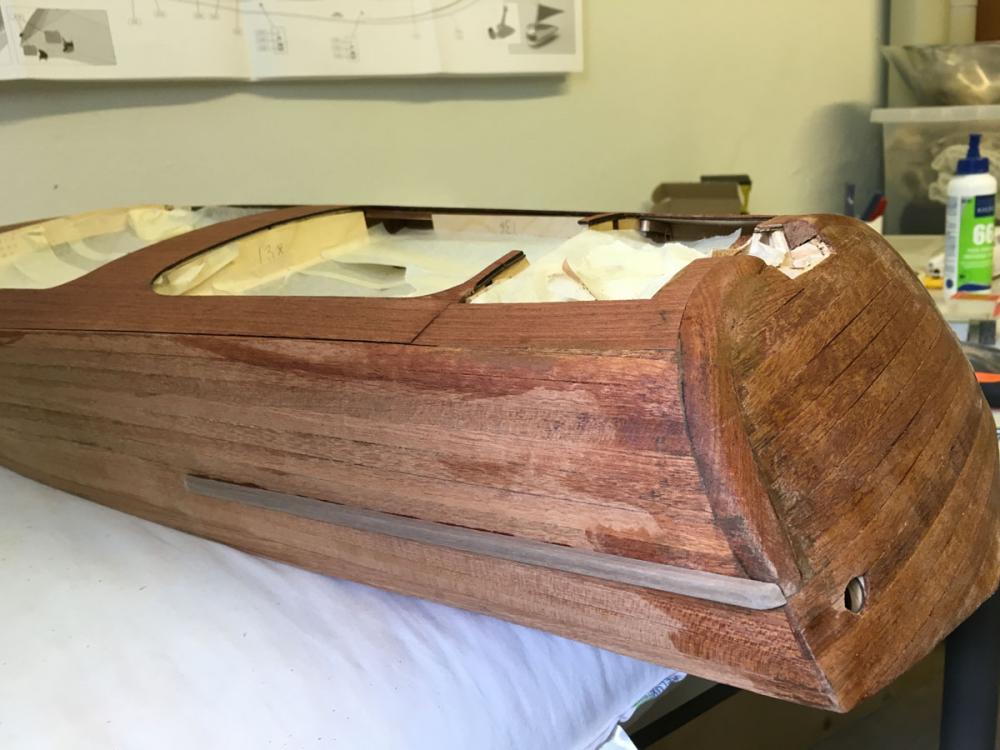
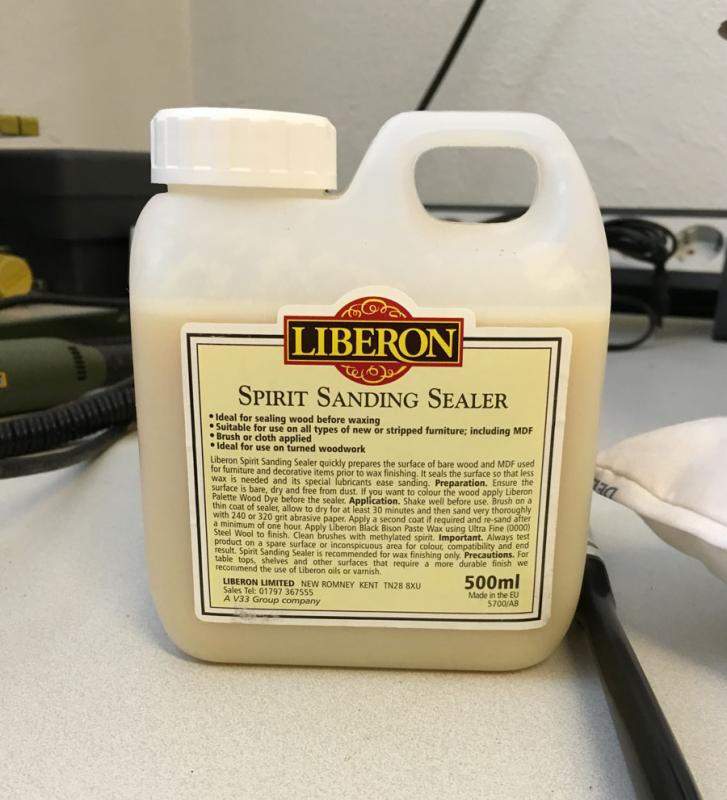
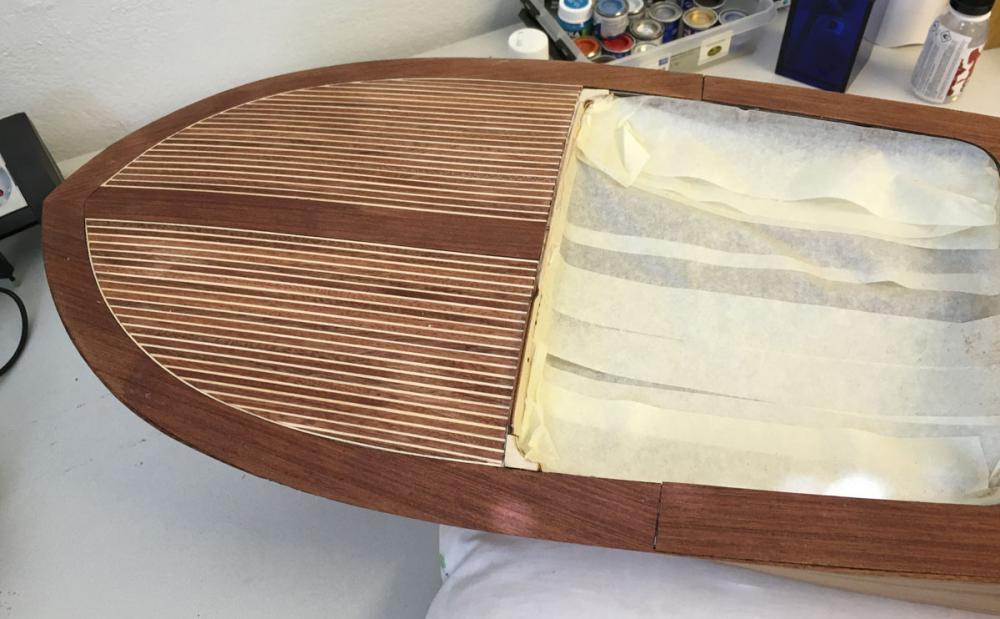
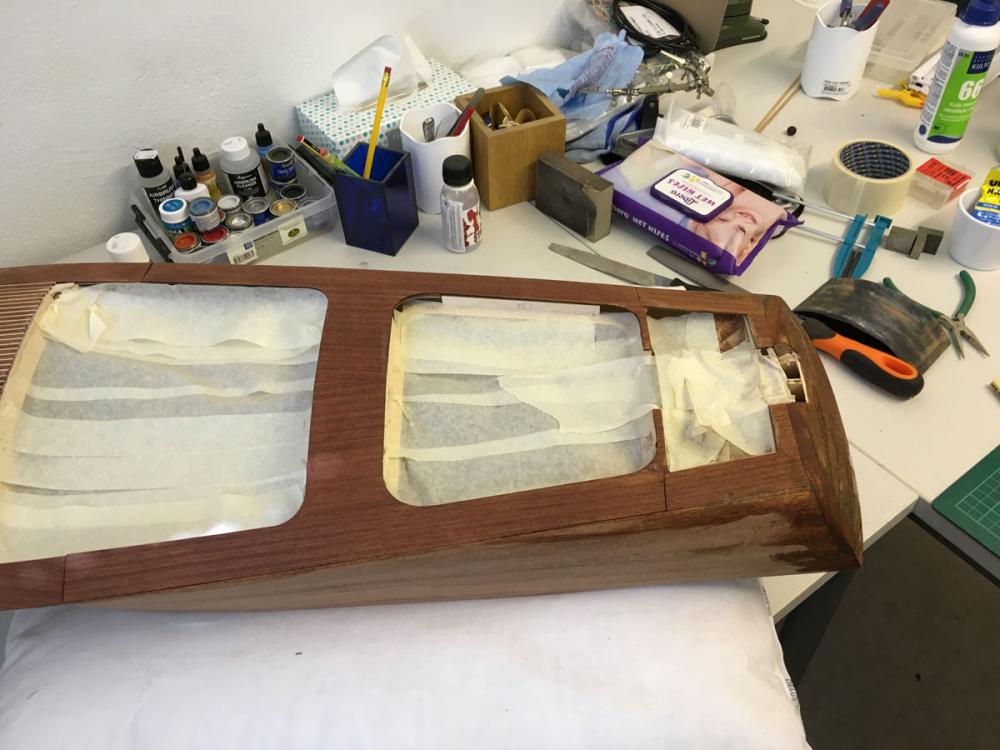
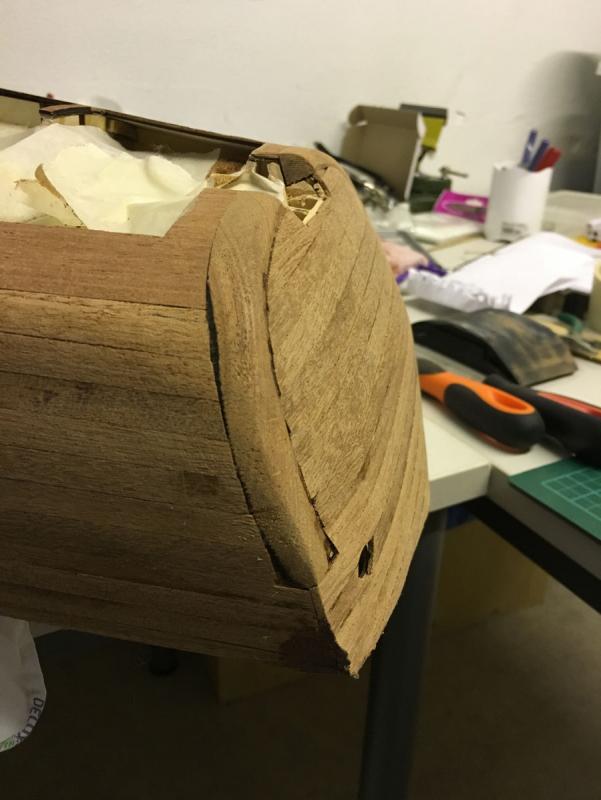
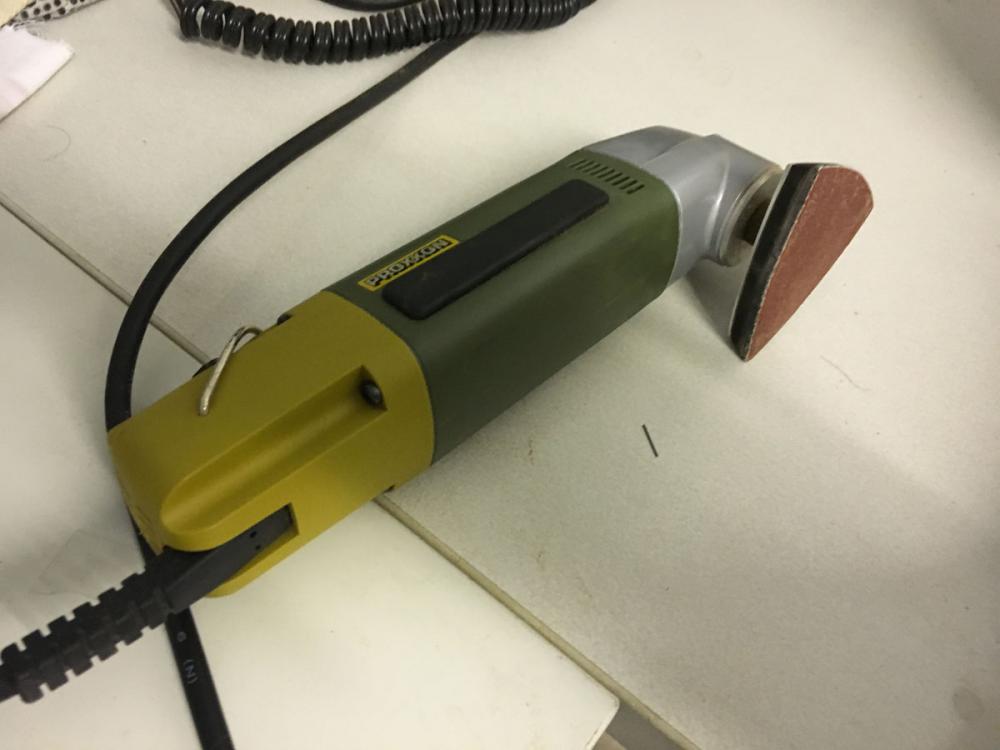
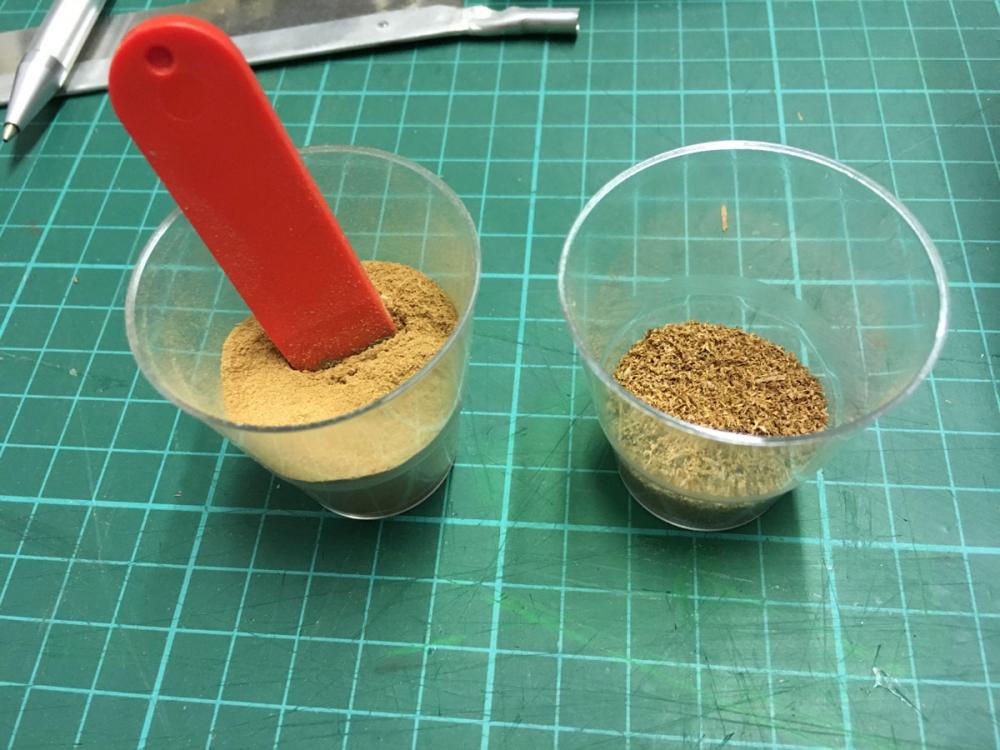
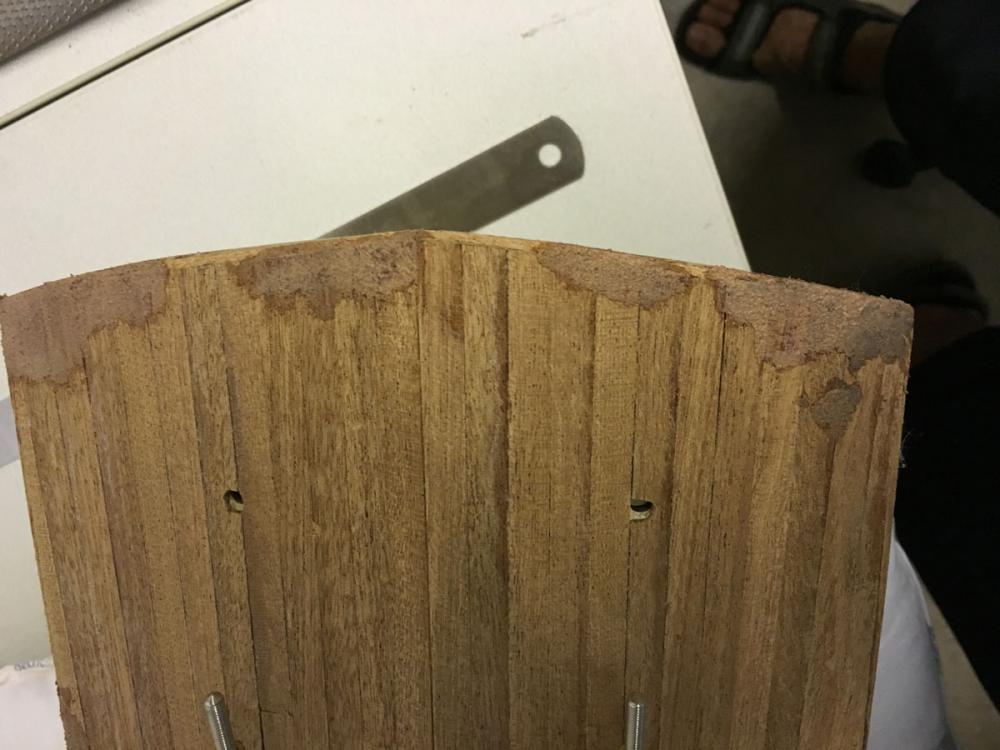
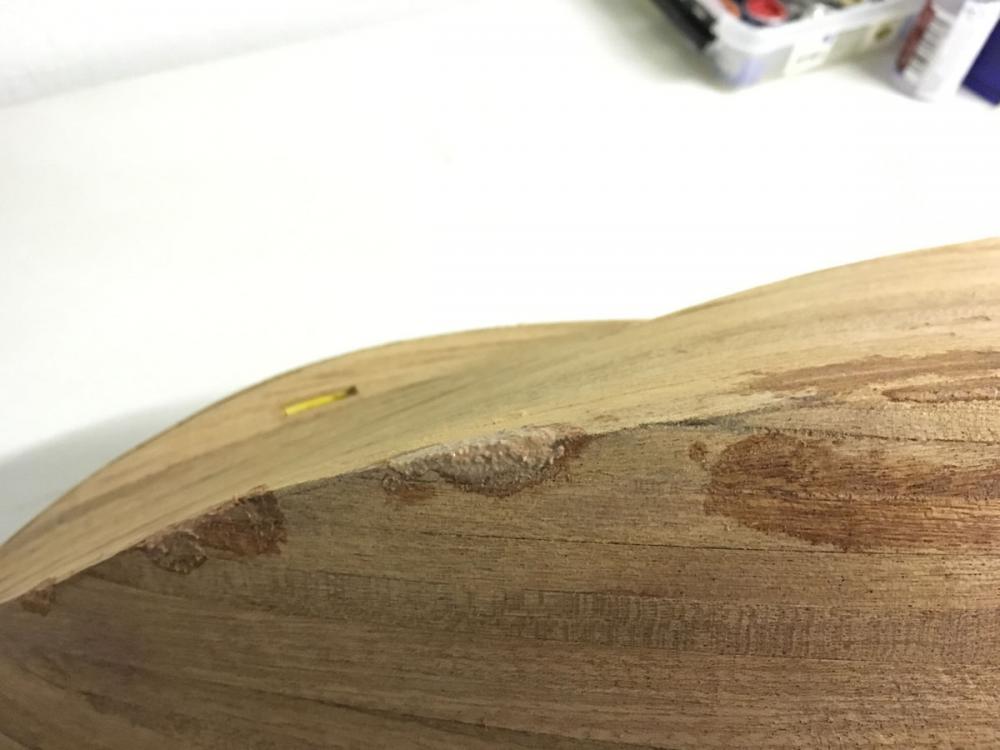
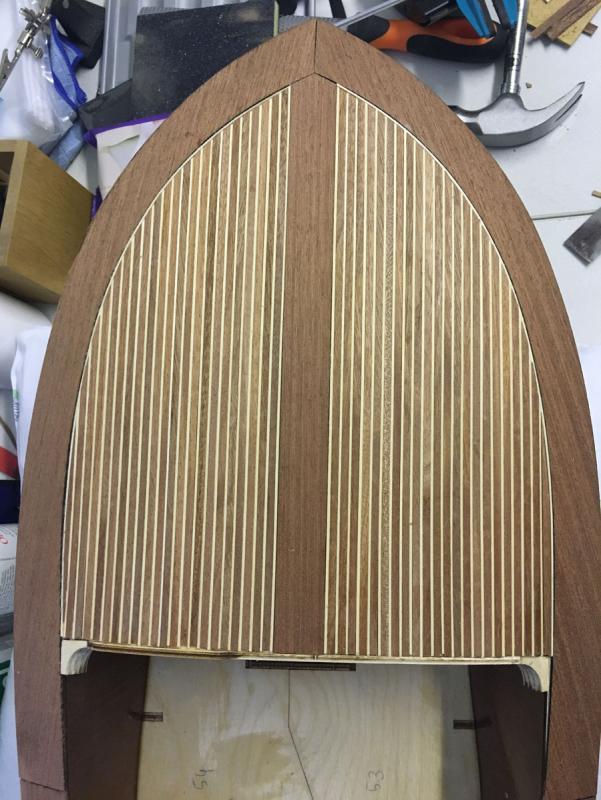
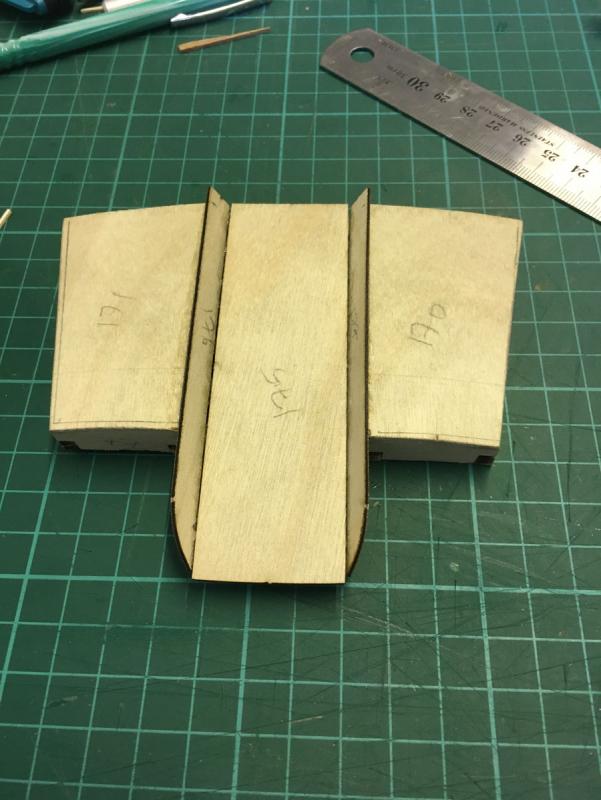
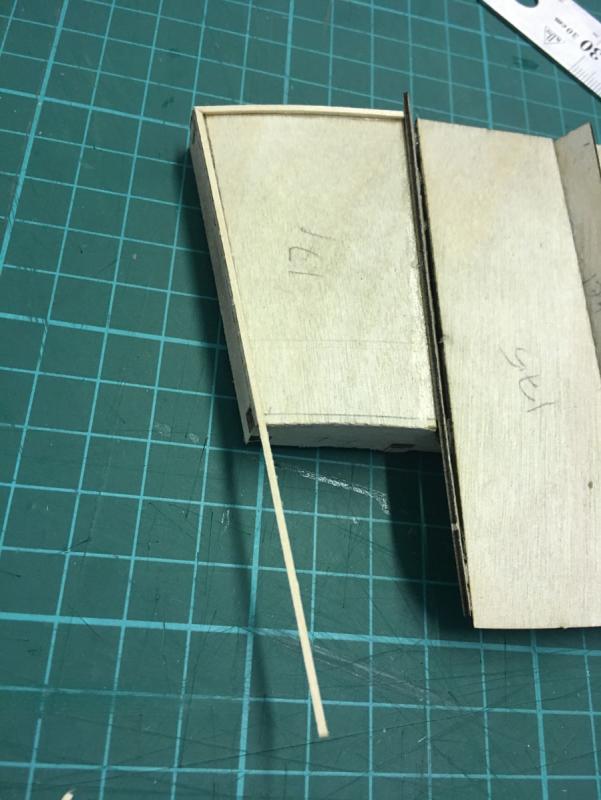
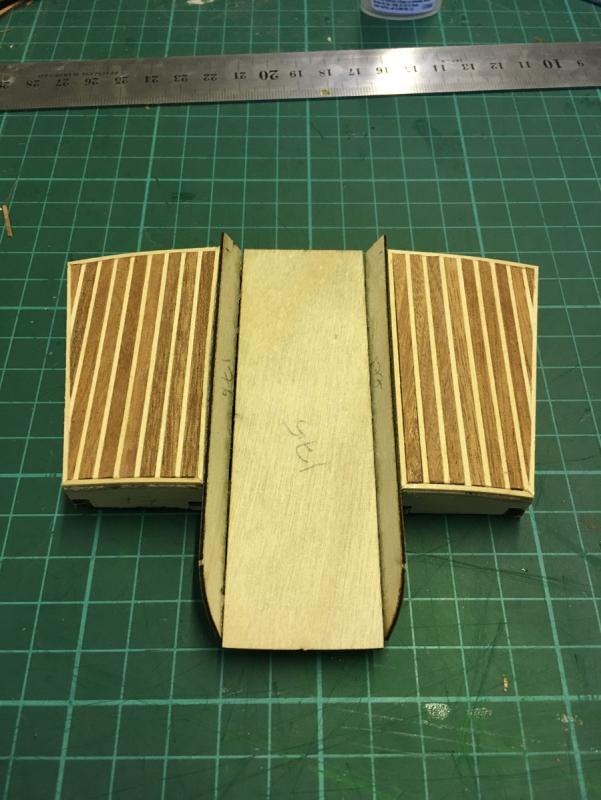
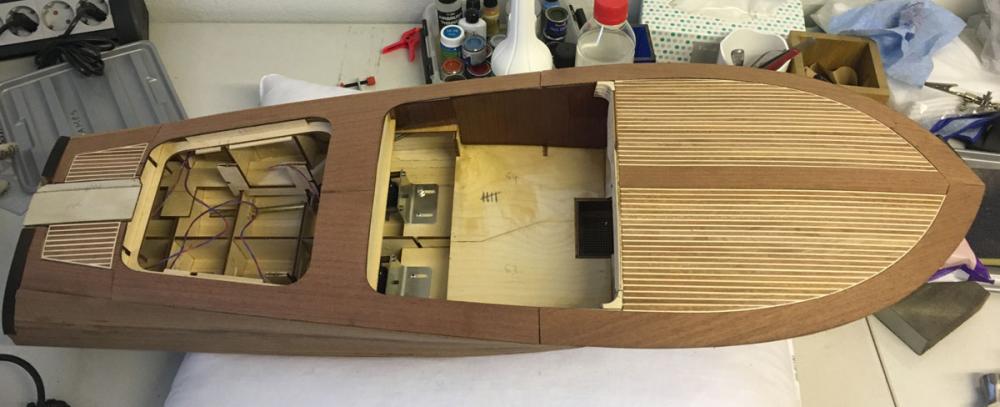
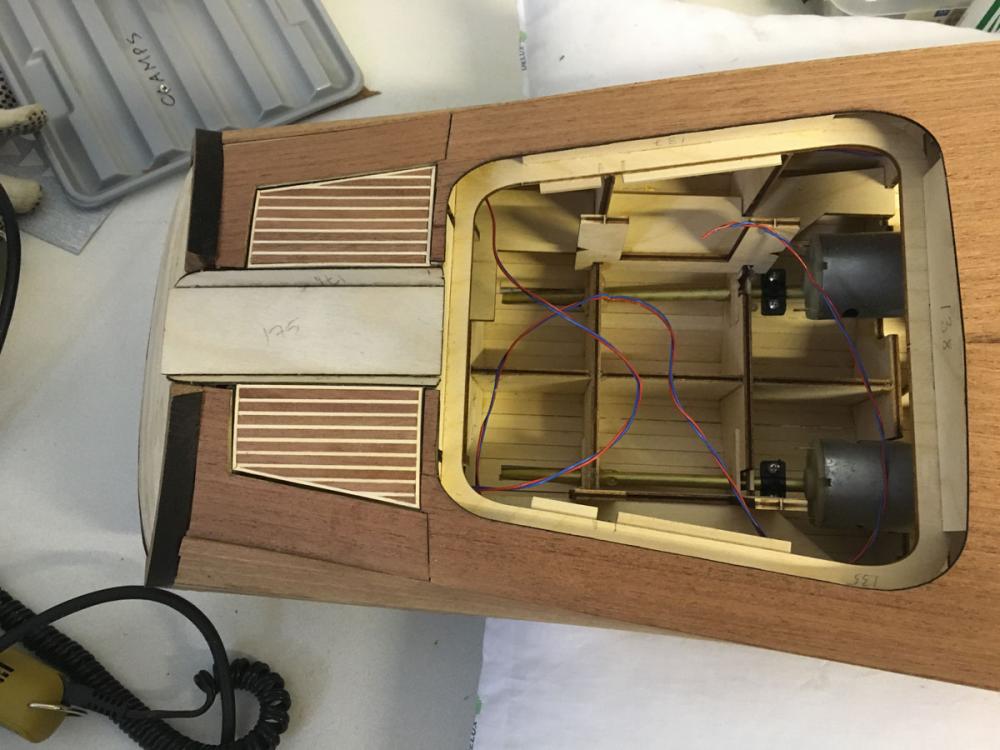
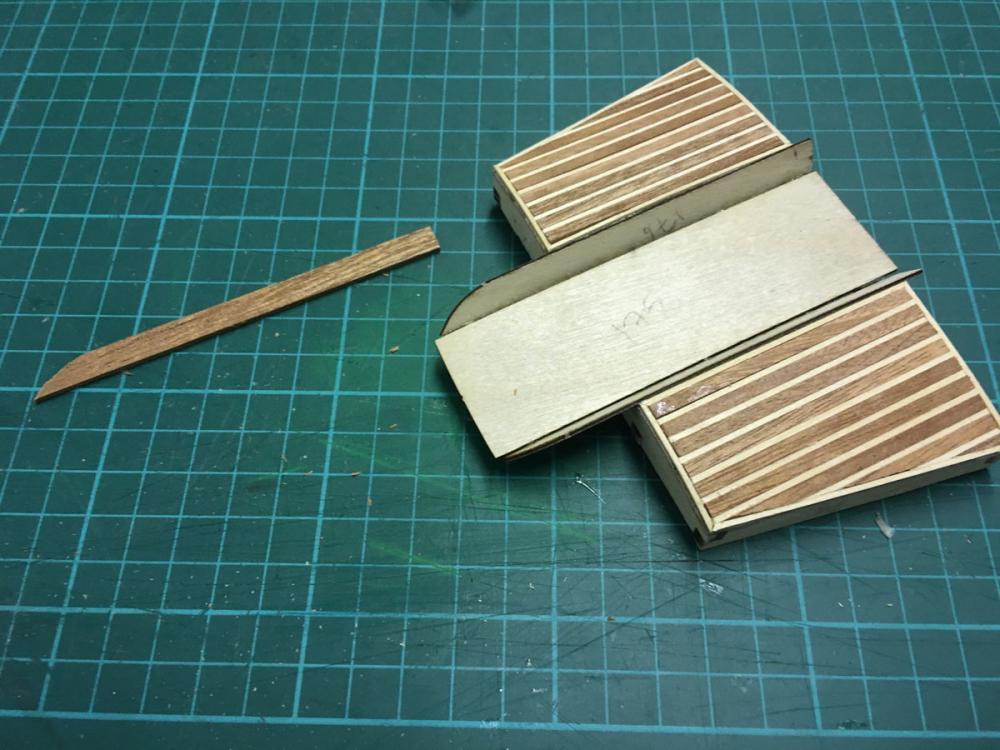
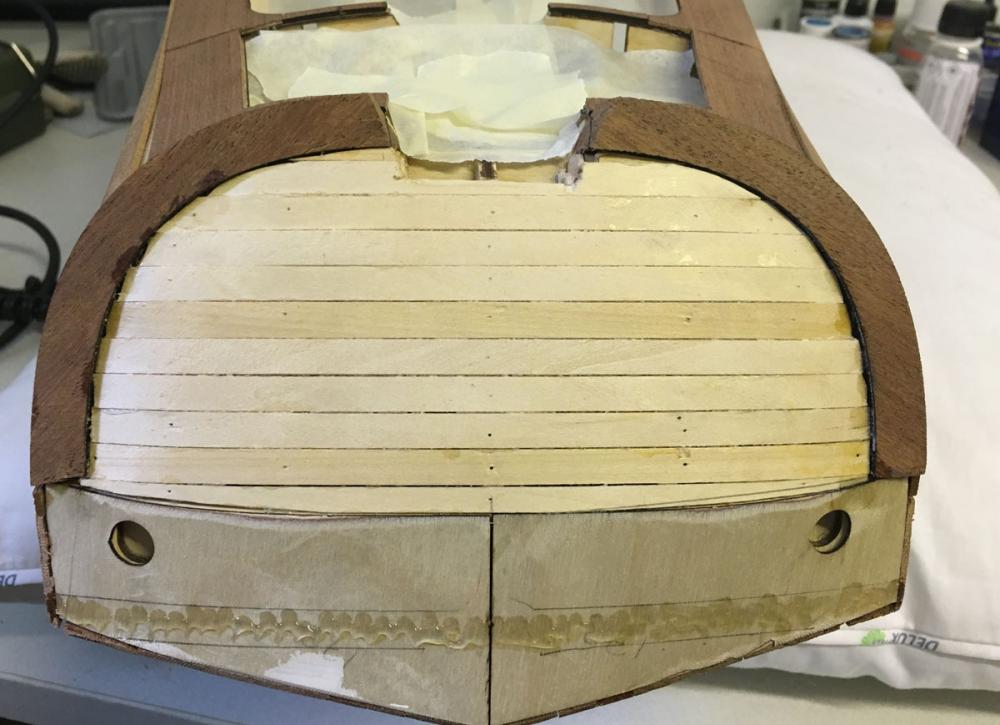
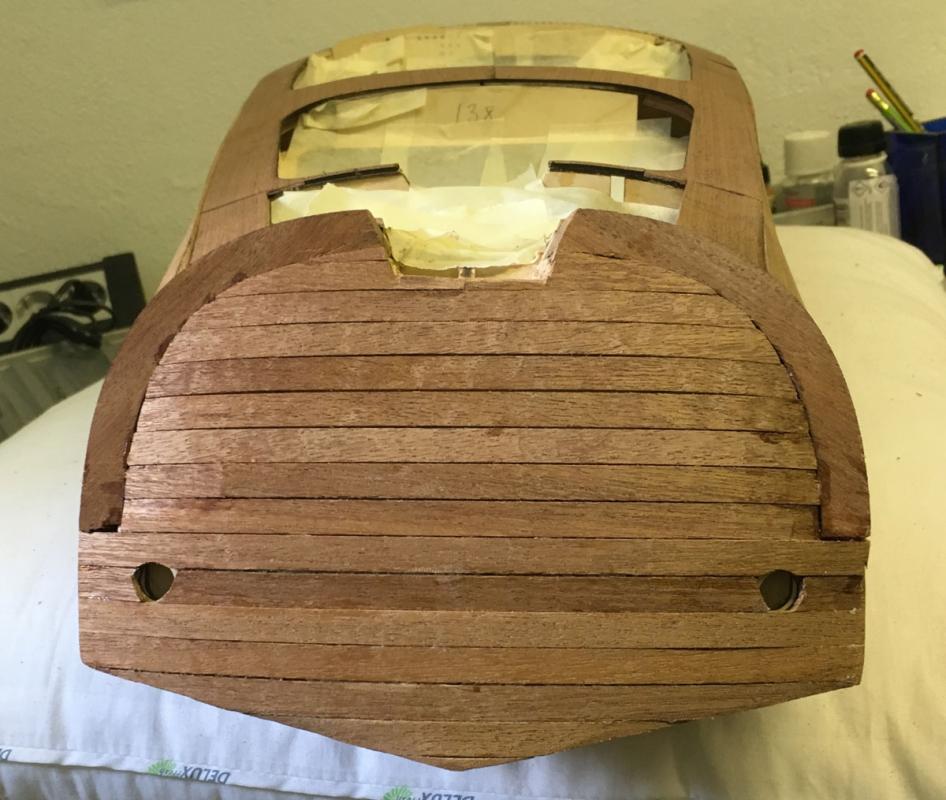
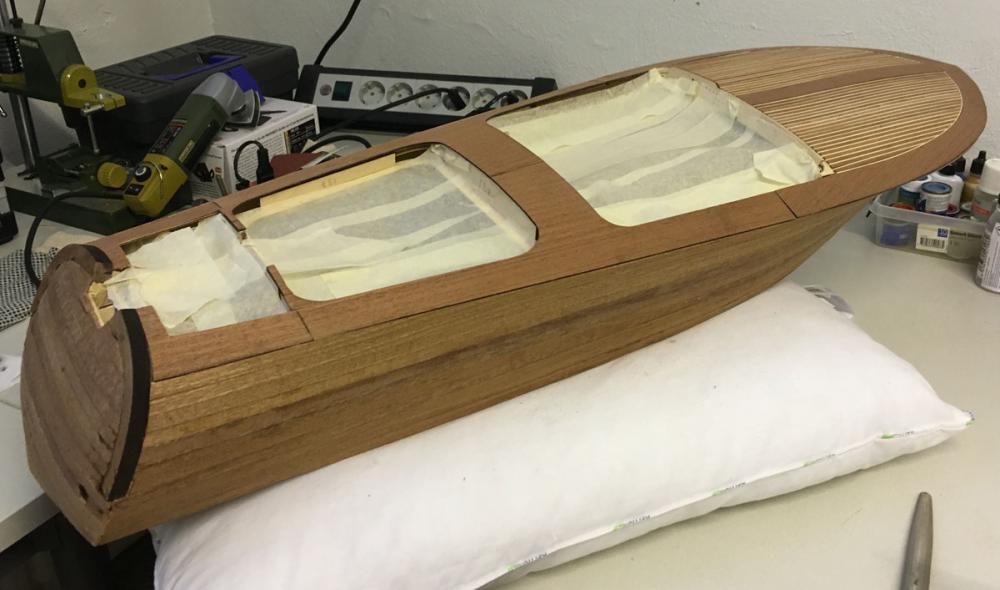
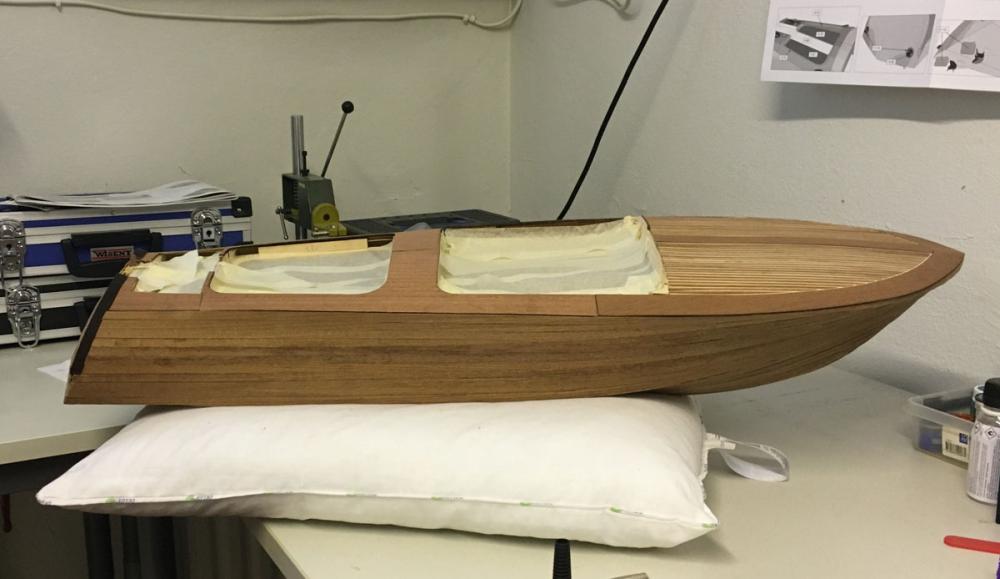
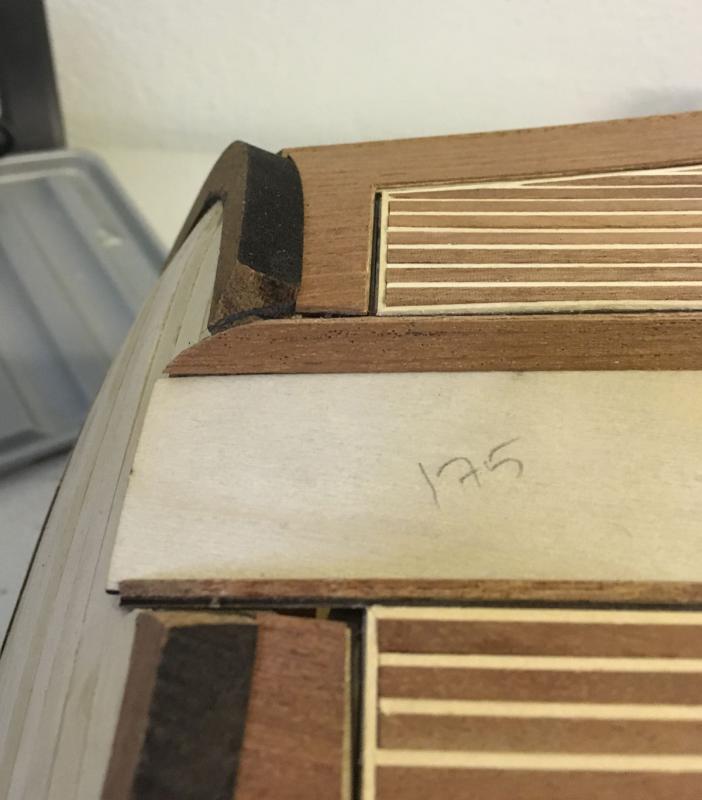
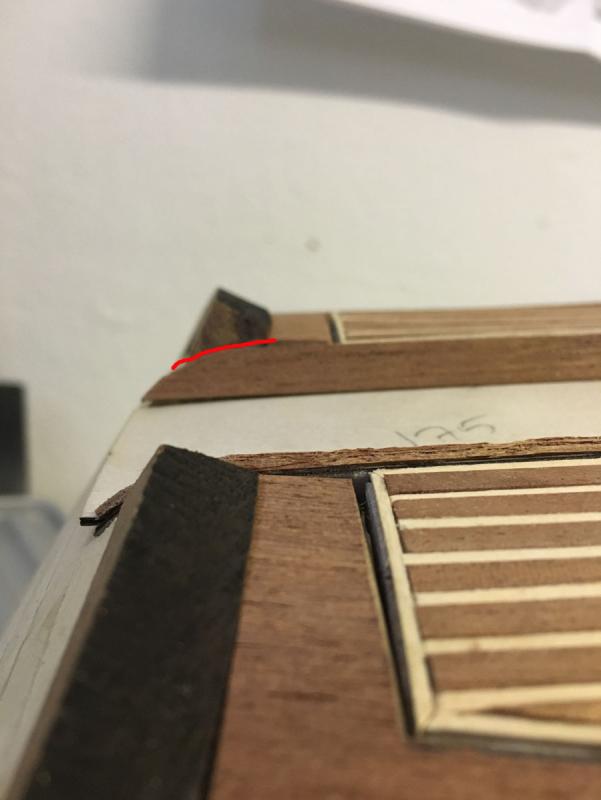
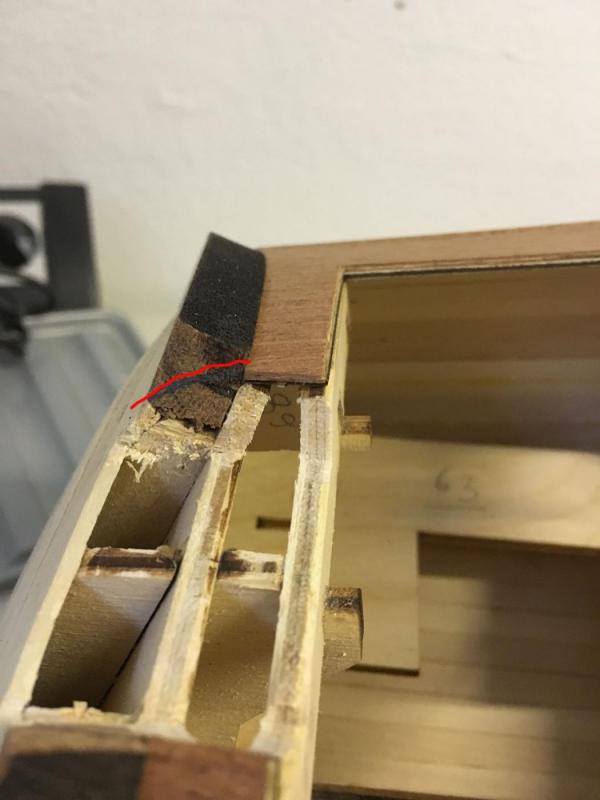
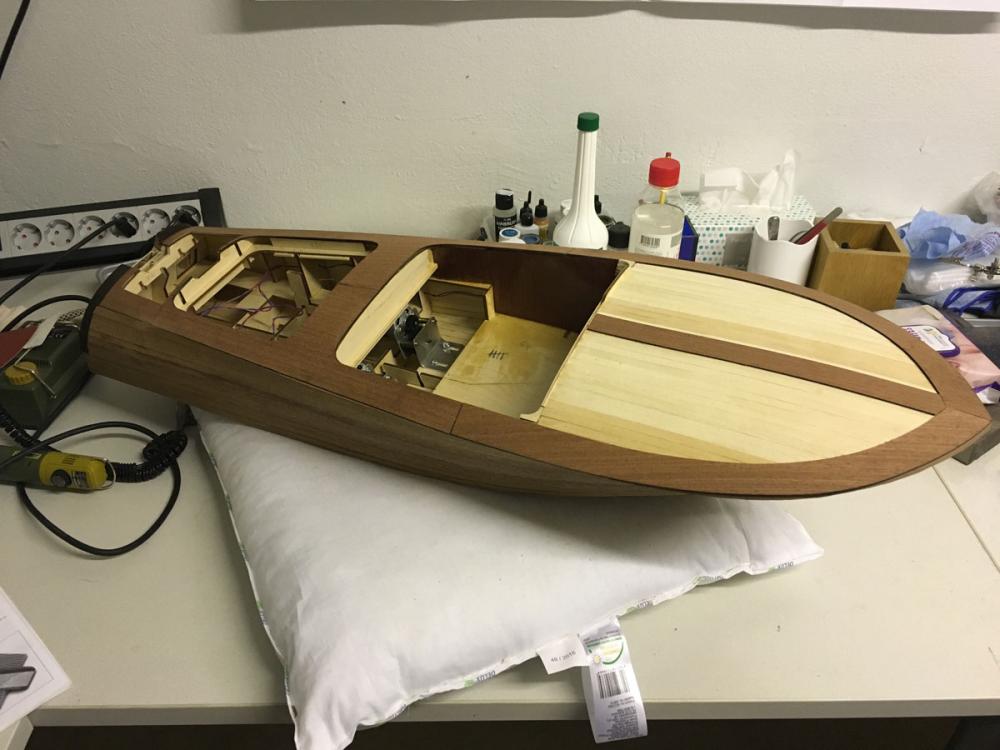
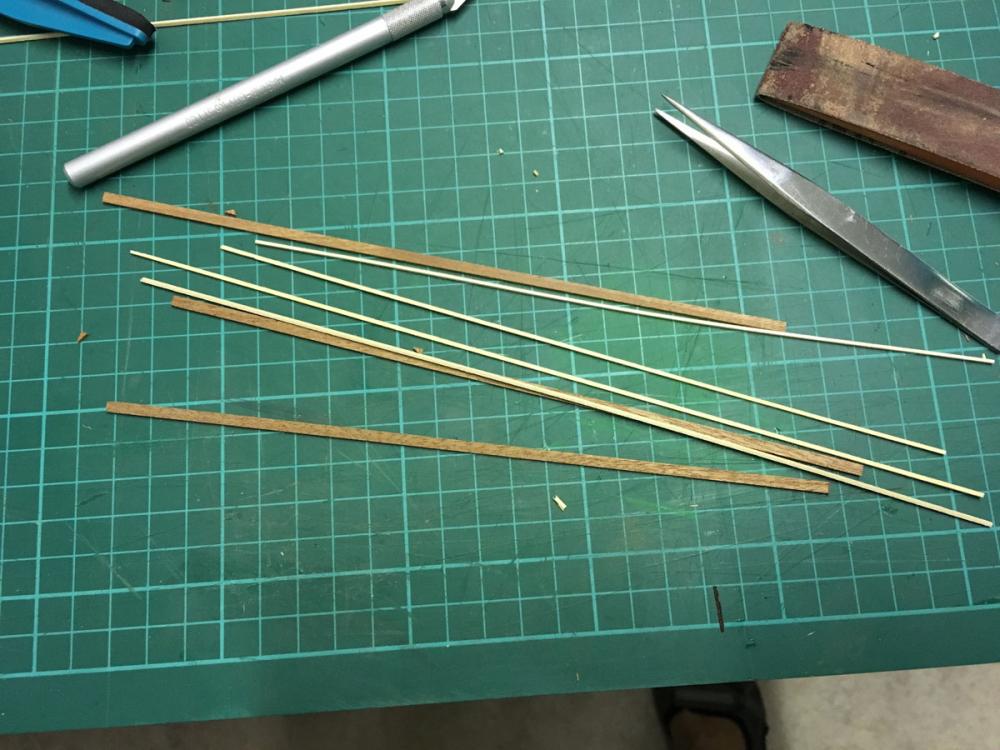
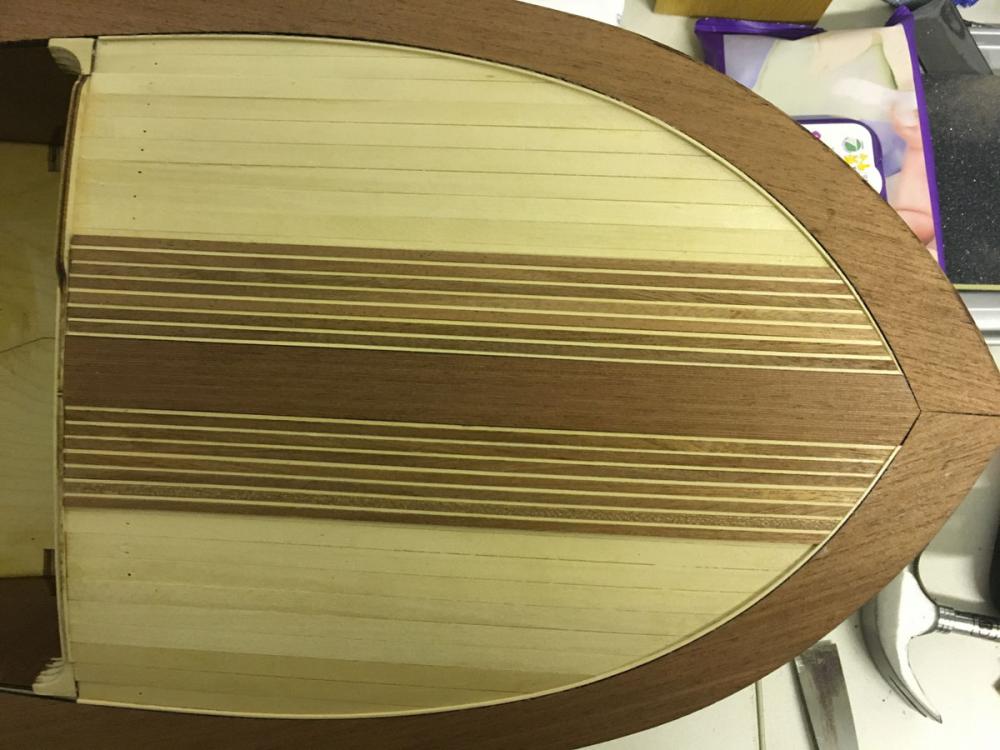
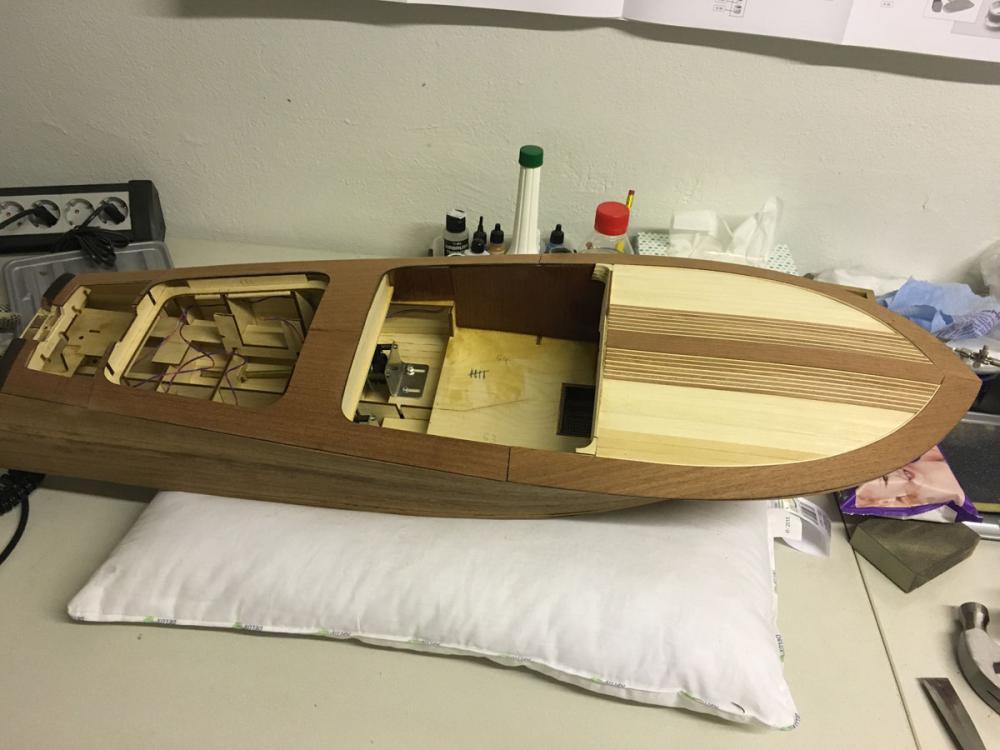
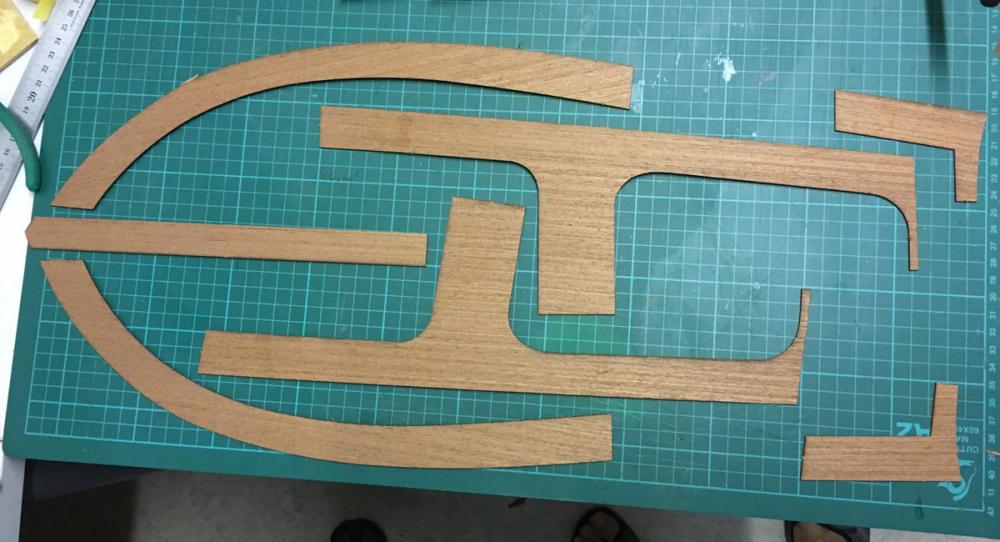
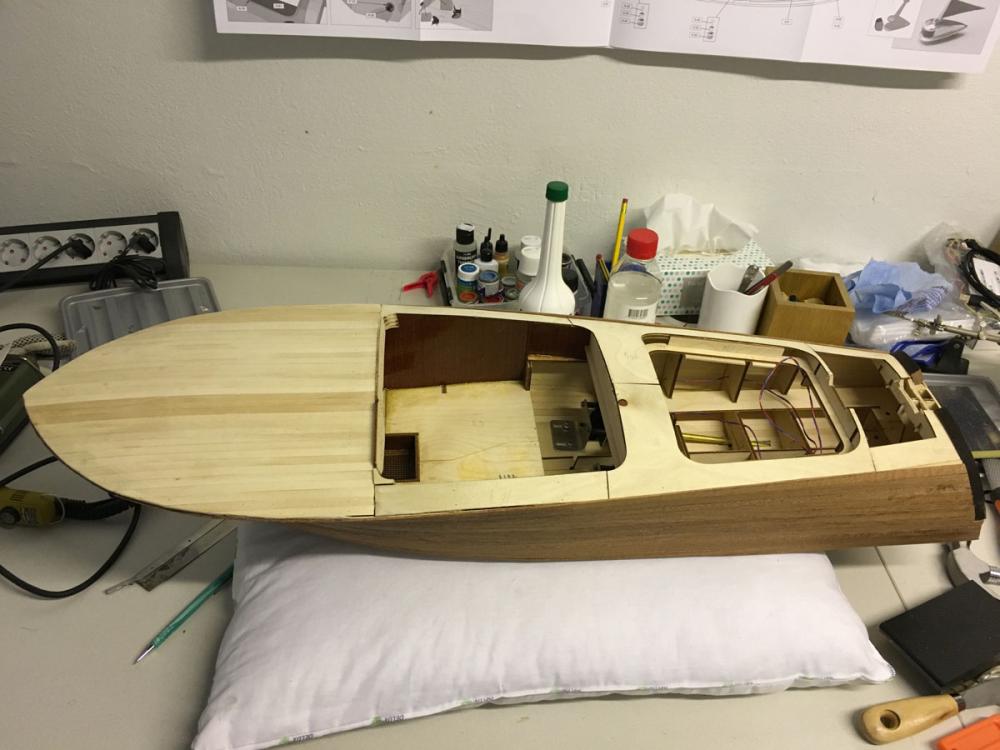
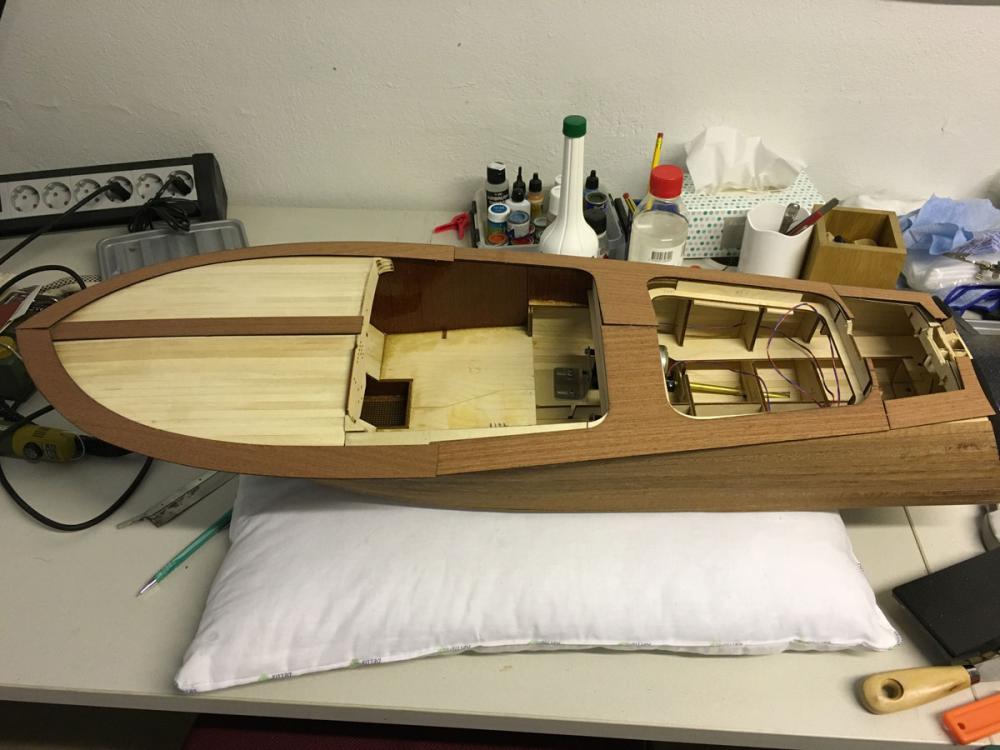
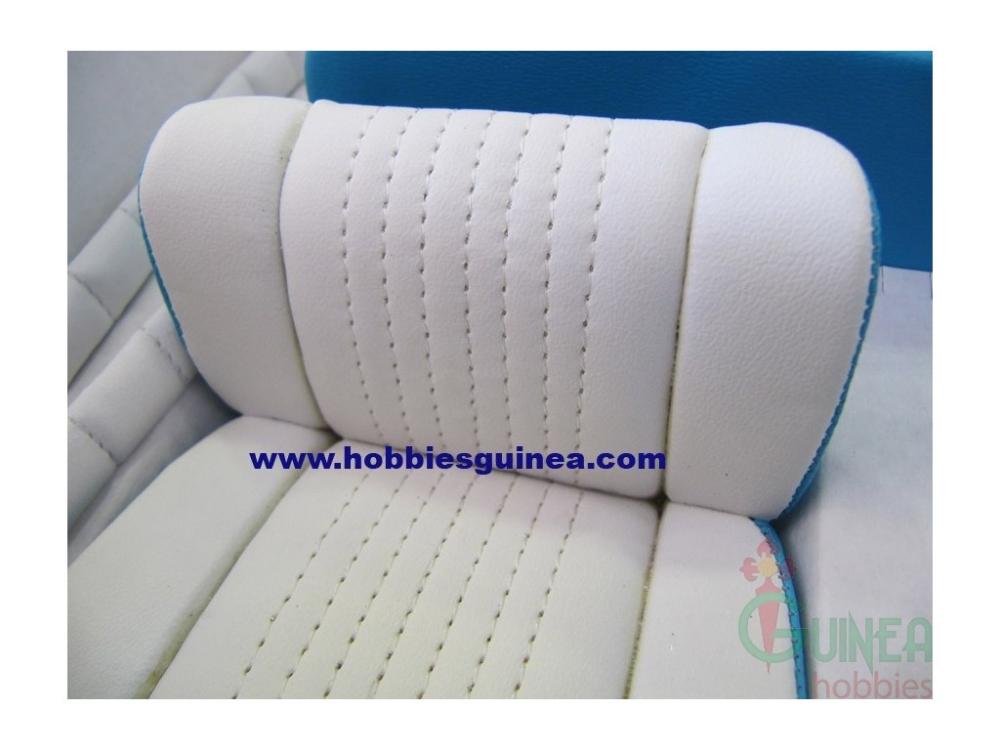
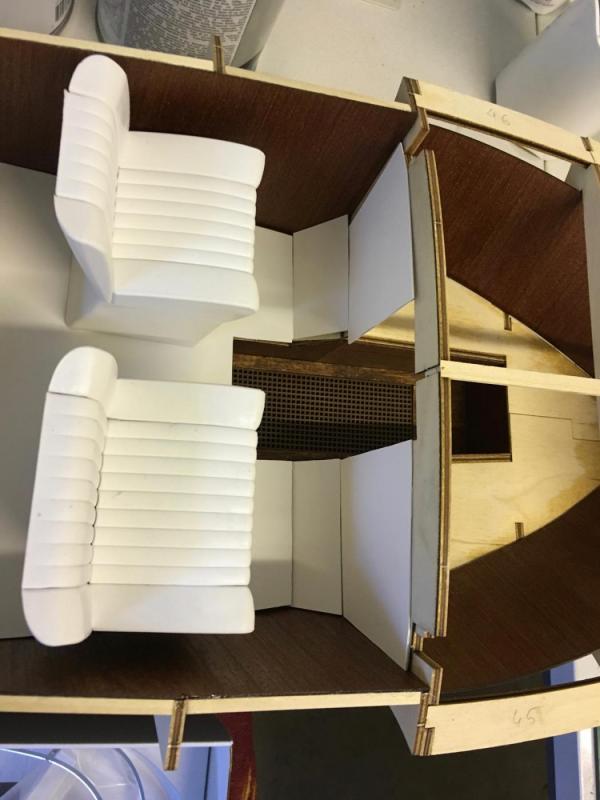
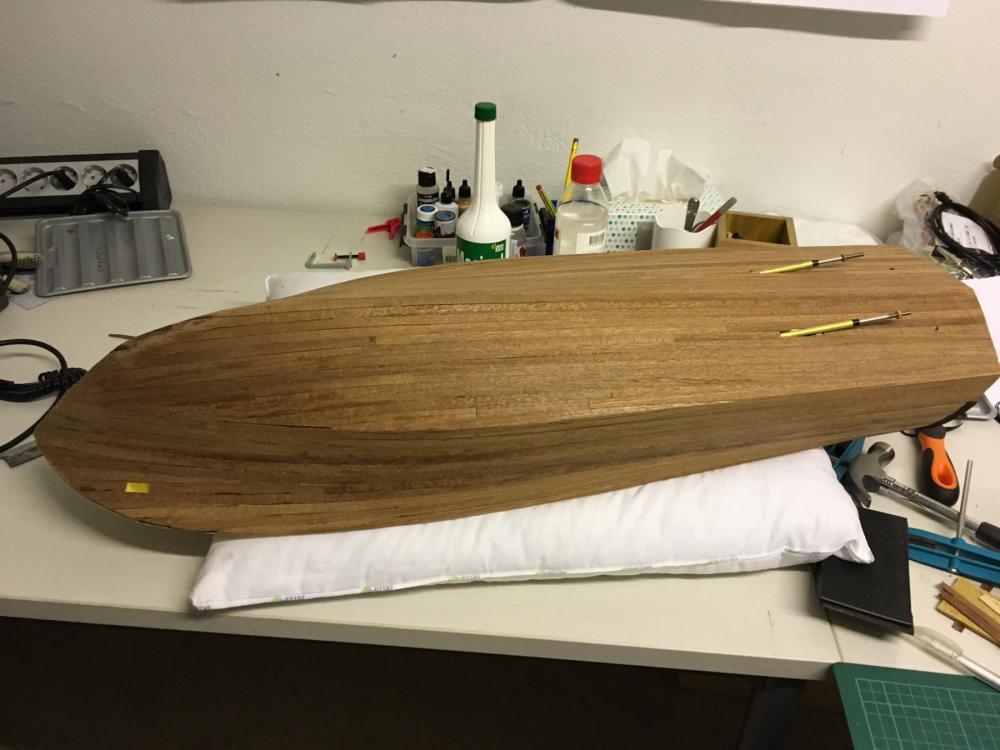
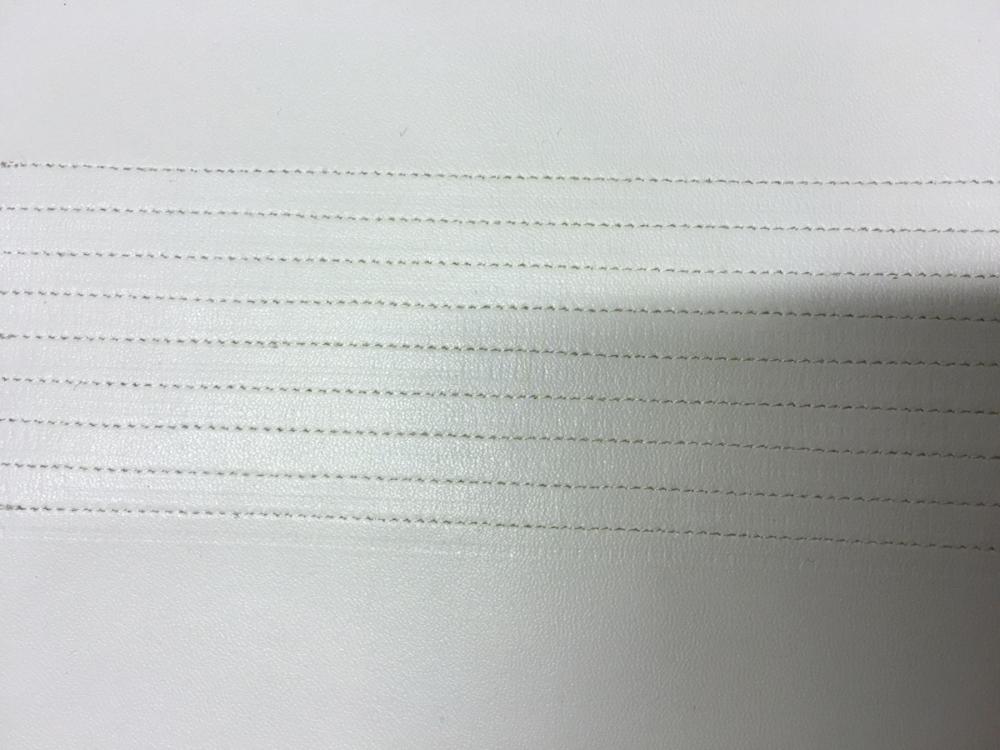
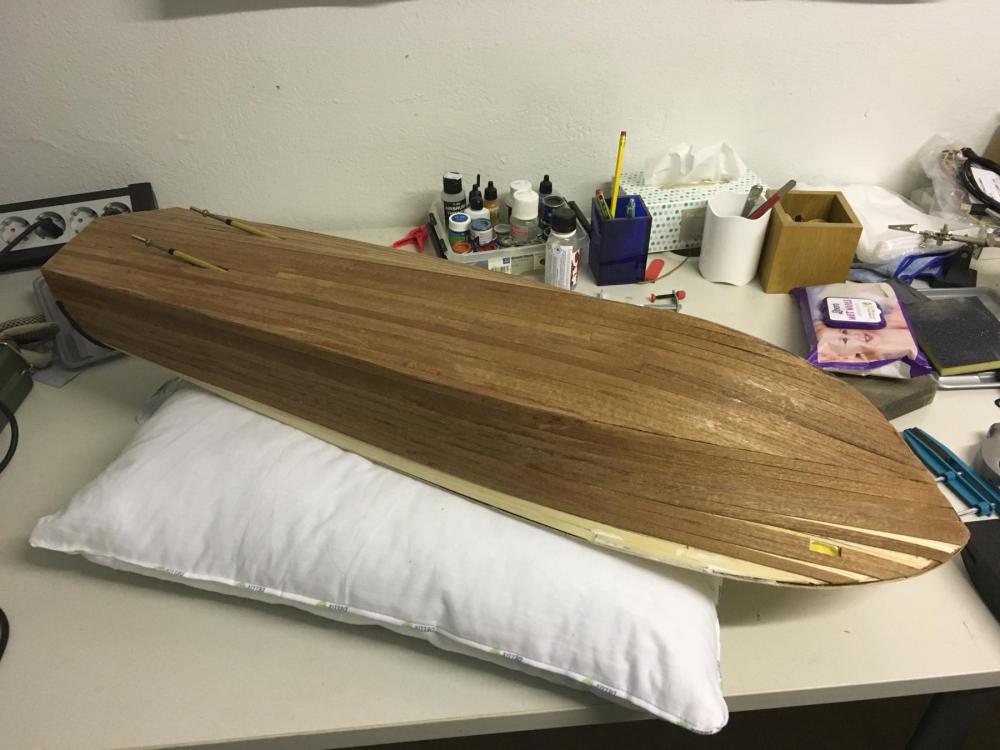

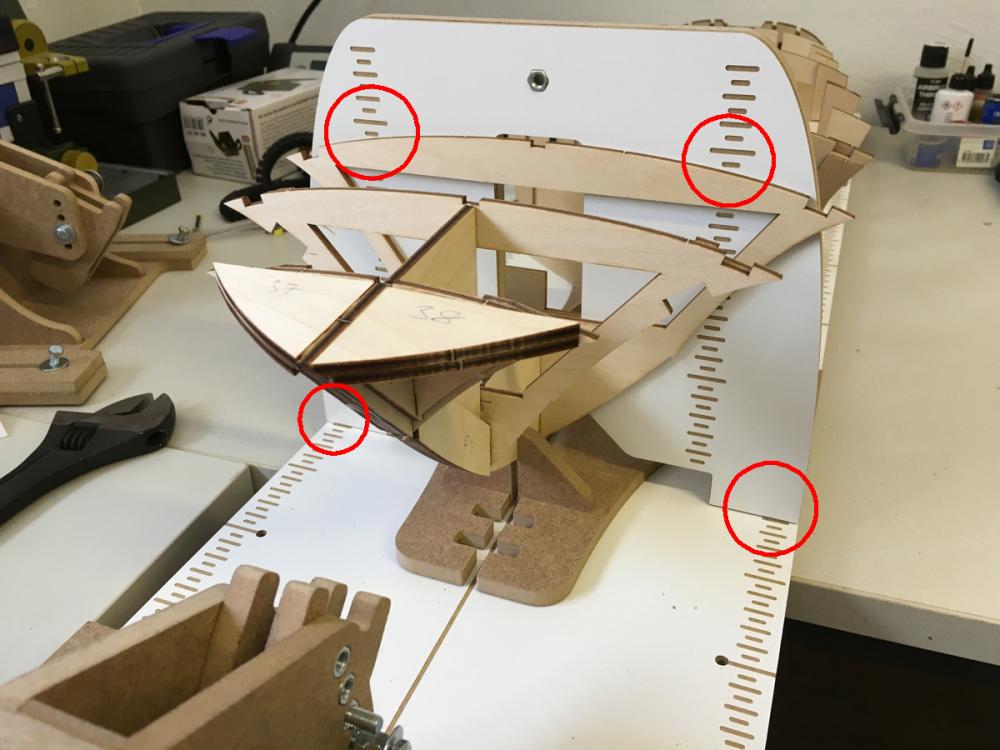
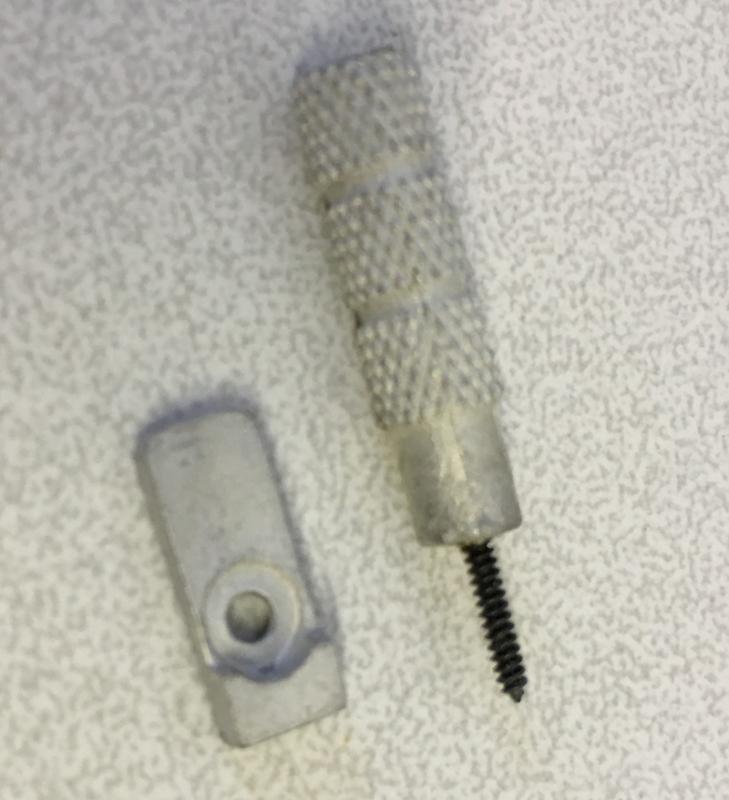
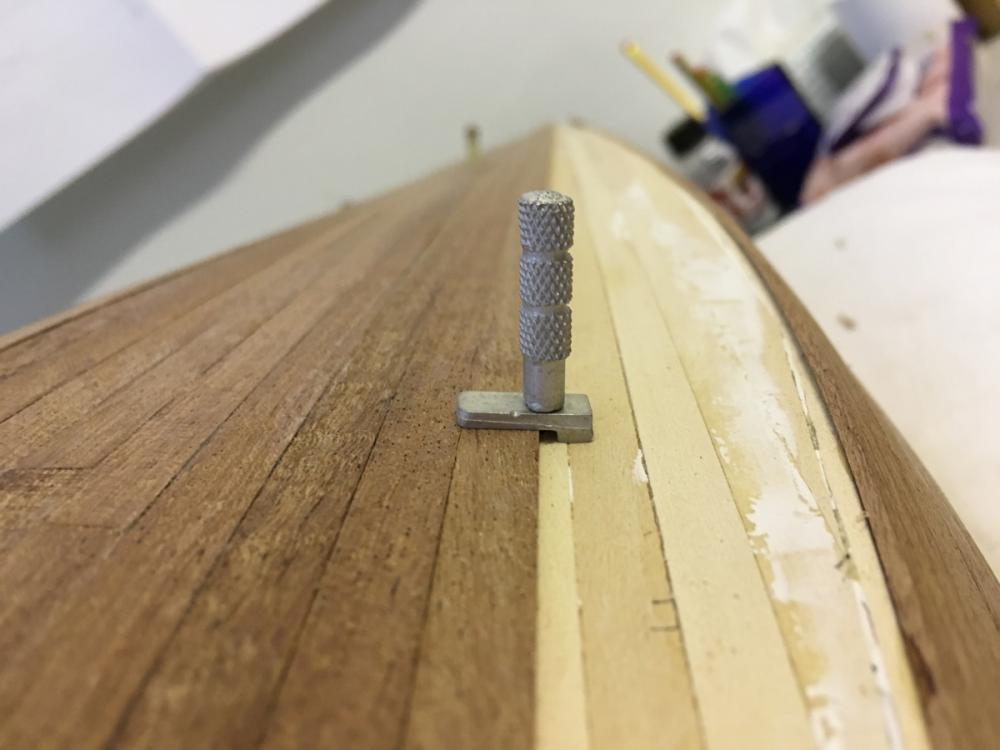
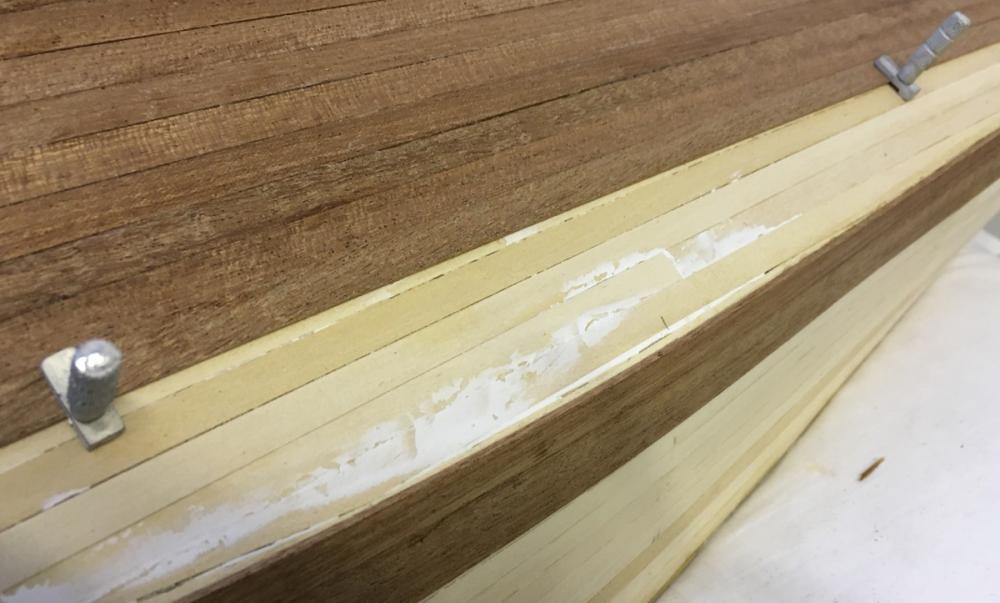
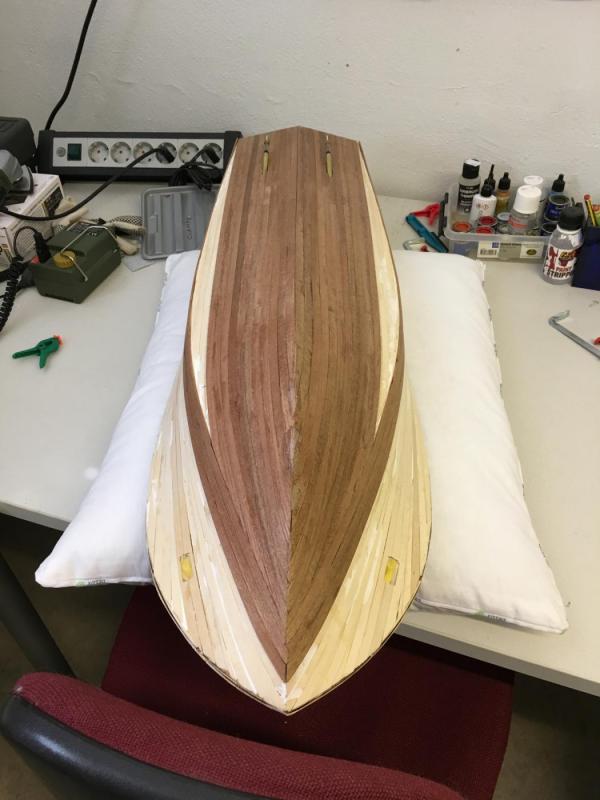
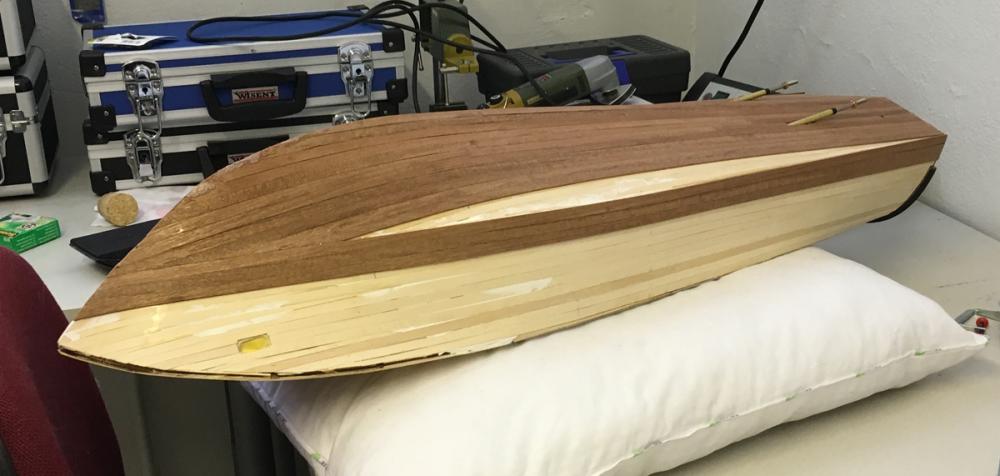
Riva Aquarama by aydingocer - FINISHED - Amati - RADIO - A new challenge for a so-far static ship builder
in - Kit build logs for subjects built from 1901 - Present Day
Posted
Deck components 236 and 221. Sanded, rounded (#236) and glued in place.